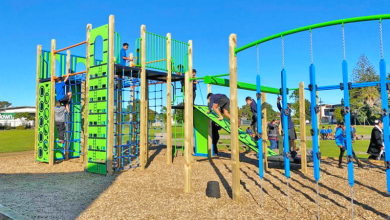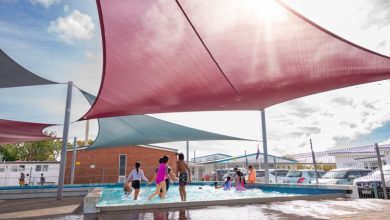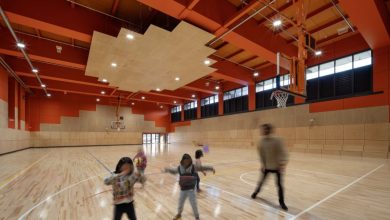How environmental comfort assists in learning

 Comfortable room conditions greatly assist performance in teaching and learning environments.
Comfortable room conditions greatly assist performance in teaching and learning environments.
There are many factors that influence the feeling of comfort; however schools and the building designers they employ have the most control over space environmental factors such as room temperature, air quality, lighting and acoustics.
Additionally, several recently constructed schools have chosen to make features of their engineering components, particularly in technology blocks, to aid in teaching students how buildings work and how they can be made to be comfortable and energy efficient.
Room Temperature and Air Quality
Several studies have shown that simply reducing elevated classroom temperatures in summer with outdoor air, without air-conditioning, can greatly improve comprehension and concentration levels in logical, mathematical and language based tasks. If the expense can be incurred, full temperature control via air-conditioning magnifies these positive effects even further.
In addition to temperature control, properly filtered fresh air greatly increases awareness by reducing C02 levels in classrooms from natural respiration – often referred to as “stuffiness”.
When compared to similar studies with adults in office environments, the beneficial effects on schoolwork are found to be greater than the beneficial effects on office work [1]. This suggests we should be placing more importance on the learning environments of our children than we currently do.
Room Acoustics
Many modern school environments, particularly computer laboratories and other areas with high heat gains, are air-conditioned. Inevitably however, cheapest first-cost solutions are often used, with insufficient regard to overall system quality, durability, optimum air distribution, and acceptable background noise levels.
When noise levels are too high, the result is a reduction in speech intelligibility and in the overall learning capacity of students [2].
Proper consideration should be given to room acoustics in design, which includes;
Reducing noise (proper attenuation of noise producing plant such as air conditioning, and the selection of low noise plant where possible);
Attenuating noise in the classroom (noise absorbent surfaces which can often be dual-use, such as hessian pin boards);
Avoiding reverberation and echoes (caused by hard surfaces such as tiled floors in older schools).
Light
Wherever possible, learning environments should be designed to maximise natural light. Natural light improves learning ability and reduces energy use through a lower reliance on artificial lighting.
A paper by Heschong (1999), which investigated natural lighting in school classrooms, found that there was a 20% improvement in test scores in class rooms which had higher levels of natural daylight. [3]
Many of the poor lighting conditions in existing New Zealand schools can be attributed to a lack of natural lighting considerations during design, as well as a lack of consideration in the correct placement of artificial (electrical) lighting.
Artificial lighting in schools is often placed by an electrical contractor using guesswork, without proper design to check lighting levels at reading surfaces.
Today’s designers have sophisticated software available at their fingertips to check lighting levels quickly on different surfaces, and can optimise lighting for different environments. Considerations include glare in computer rooms, and adequate lighting levels in craft and technology rooms. Software can be used to optimally locate artificial lights to compliment natural day lighting so as to provide the greatest benefit of both.
Energy
Consumption of energy is directly related to the comfort levels within learning environments.
Students can be taught about energy savings and the effect that this can have on the classroom environment. Attitudes are developed early in childhood and therefore schools are in an ideal place to raise awareness about the environment, energy saving, and the sustainable use of resources.
It has been shown that children who studied climate change in school were more likely to believe that they can influence it [4]. School buildings themselves can assist in the integration of topics such as energy efficiency into the curriculum. Building features such as weather stations and energy meters can be integrated into school computer networks which can then allow students to analyse weather conditions, energy usage and associated trends.
Conclusion
Air quality, temperature, acoustics, lighting and energy use in classrooms are important factors in the learning process. Improving these areas in our schools should be given priority and can be as important as the teaching materials and methods used within classroom themselves.
References
[1] Pawel Wargocki, Effects of HVAC on Student Performance, ASHRAE Journal, October 2006. [2] Jerry G. Lilly, Understanding the Problem, Noise in the Classroom, ASHRAE Journal, February 2000. [3] Satish Kumar, IEQ and the Impact on Building Occupants. ASHRAE Journal, April 2002. [4] Annette Roser, Edelgard Gruber, User Acceptance and Learning in Energy Efficient School Buildings in Germany. World Sustainable Building Conference 2011.Carl Burr is a Mechanical and Electrical engineer from Opus International Consultants. He specializes in Sustainability and is active in the New Zealand Green Building Council









